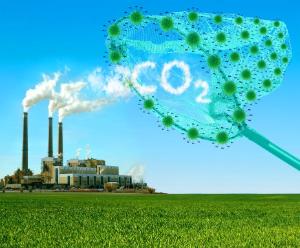Theme 2: (CEAM)
'CO² Capture and H² production'

Research Team:
- CEAM (NCL) : Dr Lidija Siller
- GU-CAS : Professor Zhixiang Wang
- SJTU : Professor Wenfeng ShangGuan
Objective: The capture of CO², using, mineralization to CaCO³ enables the storage of CO² in the lithosphere. CaCO³ is an environmentally inert and stable material found abundantly on the Earth’s surface. A novel inorganic catalyst has been discovered in an on-going ESPRC project which helps in the reversible hydration of CO² at room temperature and atmospheric pressure, providing a three-fold enhancement. This activity will explore and characterize the mechanisms of the reactions involved in the absorption process so that greater improvement can be made (GU-CAS). Further development of the novel catalysts for photocatalytic CO² conversion and H² production using solar energy (SJTU) will determine the rates of reactions for future reactor design and process development and explore various routes for catalyst recovery.
Engagement: The academic lead and an existing PGR student from SWAN will visit GU-CAS and SJTU to coordinate the joint work. A PhD student from SWAN will use photo catalytic equipment at GU-CAS to test catalysts and their recovery. The surface characterisation of catalysts will be studied using XPS, FTIR, HRTEM, XRD and SEM at SWAN and used for theoretical calculations. WS and ZXW will visit SWAN to produce journal papers, conduct seminars, and generate a joint proposal.
Additional Existing Resources:
- CEAM (NCL): 1 PGRA student (Dr Mohammed Alamiry) & 1 PhD Student (Gaurav Bhaduri)
- GU-CAS: 1 PGR student (?)
- SJTU: 1 PGR student (?)
Milestones & Deliverables:
- Quarterly progress report
- End of project roadmap report
- 5 year engagement plan
- 2 research seminars
- 2 journal papers
- A proposal to continue the collaboration will be developed at the end of the project.